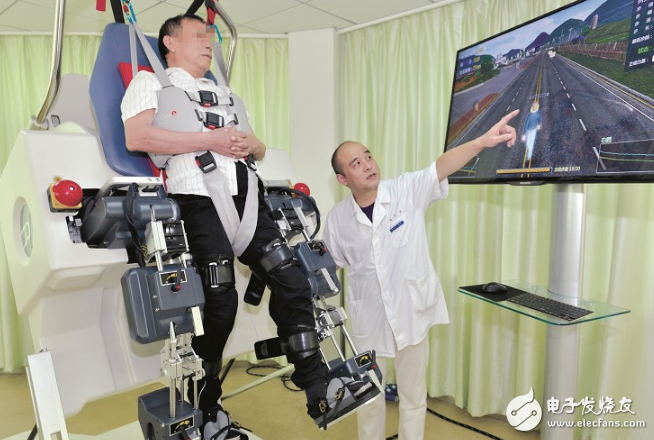In recent years, the development of rehabilitation robots in China has been significantly driven by government policies. With a huge demand for rehabilitation services and an optimistic outlook for market growth, domestic rehabilitation robotics is well-positioned to rise rapidly. The challenges faced in early development have turned into competitive advantages, paving the way for faster progress in the industry.
As market demand continues to grow and policy incentives keep unfolding, the rehabilitation sector is experiencing a period of accelerated growth. This favorable environment offers great opportunities for rehabilitation robots to develop and gain traction. Looking ahead, breakthroughs in core technologies and increased commercialization are expected to fuel more substantial growth in the domestic rehabilitation robot industry.
In recent years, the rapid advancement of rehabilitation medicine and growing public awareness of rehabilitation needs have contributed to a rising interest in robotic solutions. As a result, the rehabilitation robot market has started to heat up, with many companies entering the space to capture this emerging opportunity.

**The rehabilitation robot market holds significant potential**
With the overall improvement in economic conditions and living standards, people’s demand for healthcare is increasing, particularly for non-traditional medical fields like rehabilitation. According to the 2017 Blue Book on China's Disabled Persons' Career Development Report, there are approximately 85 million disabled individuals in China, and nearly 50 million of them require rehabilitation services.
Additionally, as the aging population grows, the elderly are becoming another key group with high demand for rehabilitation. This large base of potential users is driving the expansion of the rehabilitation robot market.
Under the new economic normal, meeting the rehabilitation needs of the disabled and elderly has become a critical issue. The development of the rehabilitation industry is essential, and there is an increasing need to promote standardization and diversified growth in the rehabilitation robot sector, supporting the continuous improvement of rehabilitation medicine.
**Domestic rehabilitation robots benefit from strong policy support**
Policy support plays a crucial role in the growth of any emerging industry. Since 2009, China has introduced multiple policies to guide the development of rehabilitation hospitals and encourage the adoption of intelligent equipment such as rehabilitation aids and robots. Local governments have also issued guidelines to support the development of the rehabilitation aid industry, accelerating the deployment of rehabilitation robots.
The "Robot Industry Development Plan (2016–2020)" jointly released by several ministries emphasized the importance of developing key products such as surgical and nursing robots. It aimed for small-scale production and application in areas like elderly care, disability assistance, and medical rehabilitation by 2020. At the technical level, service robots in medical, family, security, disaster relief, and research sectors were approaching international standards.
Moreover, more rehabilitation programs are being included in medical insurance, and the inclusion of rehabilitation robot-related treatments in the future is highly anticipated. This means that the rehabilitation robot industry is entering a period of concentrated policy benefits, offering rare historical opportunities for growth.
**The future of domestic rehabilitation robots looks promising**
For a long time, due to economic constraints and unique national conditions, China's medical system has focused more on treatment than on rehabilitation, leading to a significant gap compared to developed countries. However, this situation also creates a vast opportunity for the rapid development of the rehabilitation industry.
At the same time, the shortage of rehabilitation professionals has made it difficult to meet the growing demand in the short term. Therefore, the widespread use of rehabilitation robots is becoming a vital solution to this challenge. With ongoing reforms in China’s medical and health system, domestic rehabilitation robots have made significant progress through the combined efforts of capital, technology, and policy.
Today, Chinese rehabilitation robots not only have mature R&D capabilities but also enjoy cost advantages in both R&D and labor. According to China Intelligent Manufacturing Network, as the world's largest and most promising market for rehabilitation, China provides a very favorable environment for the development of domestic rehabilitation robot companies.
However, it is important to acknowledge the technological and commercial gaps between domestic and foreign high-end brands. To remain competitive, the domestic industry must continue to invest in R&D and improve its commercial strategies, pushing forward with innovation and exploration.
Double Pole Rocker Switches,2 Pole Rocker Switch,Dual Pole Rocker Switch
Yang Guang Auli Electronic Appliances Co., Ltd. , https://www.ygpowerstrips.com